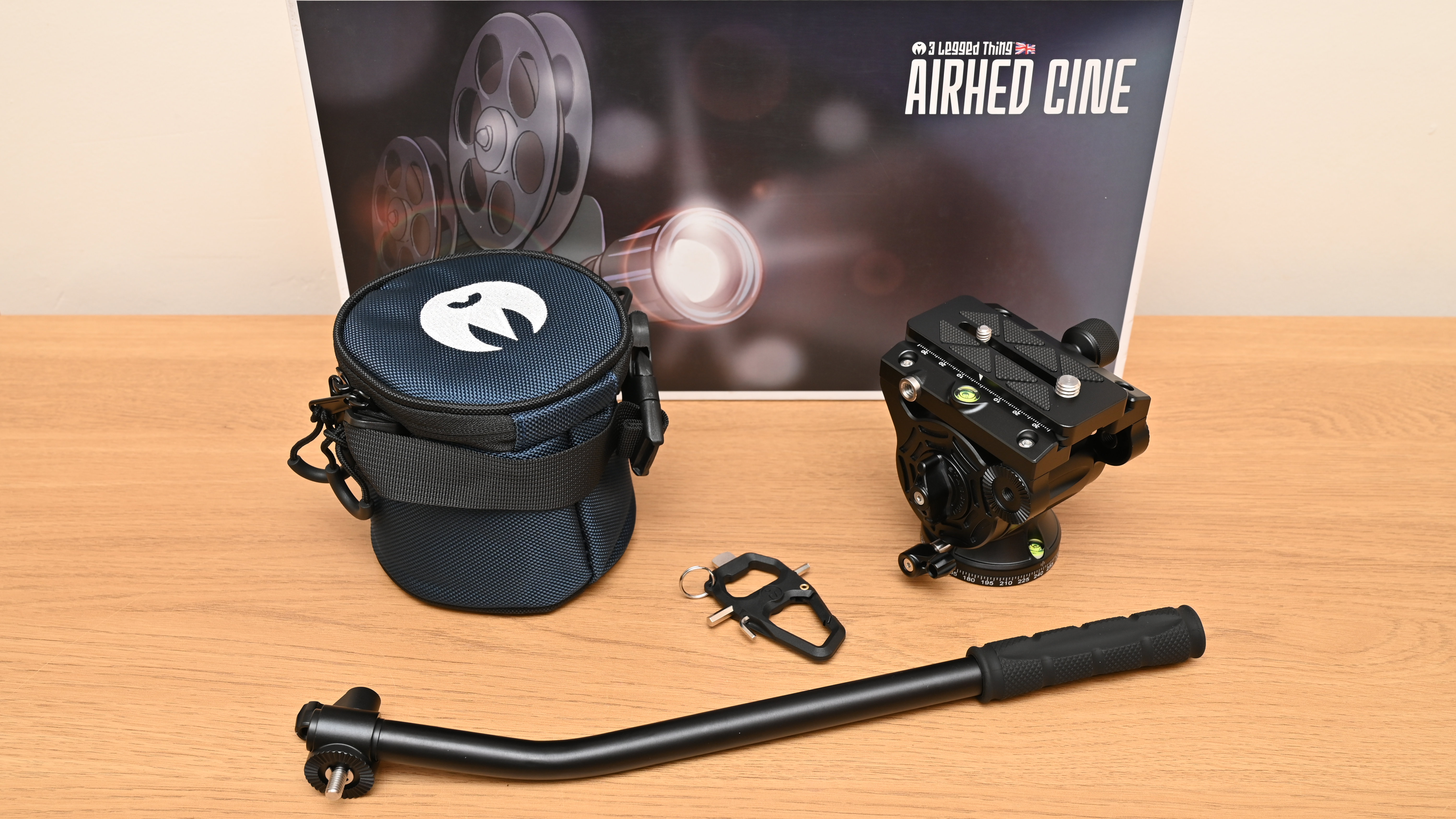
The 3 Legged Thing AirHed Cine is engineered to enable smooth, fluid movement in two axes, for tilt and panning when shooting video. That said, it works perfectly well for stills photography, especially when combined with an L-bracket like the 3 Legged Thing Lexie or Zelda, giving the option of additional portrait orientation shooting, with quick and easy swapping between the landscape and portrait modes.
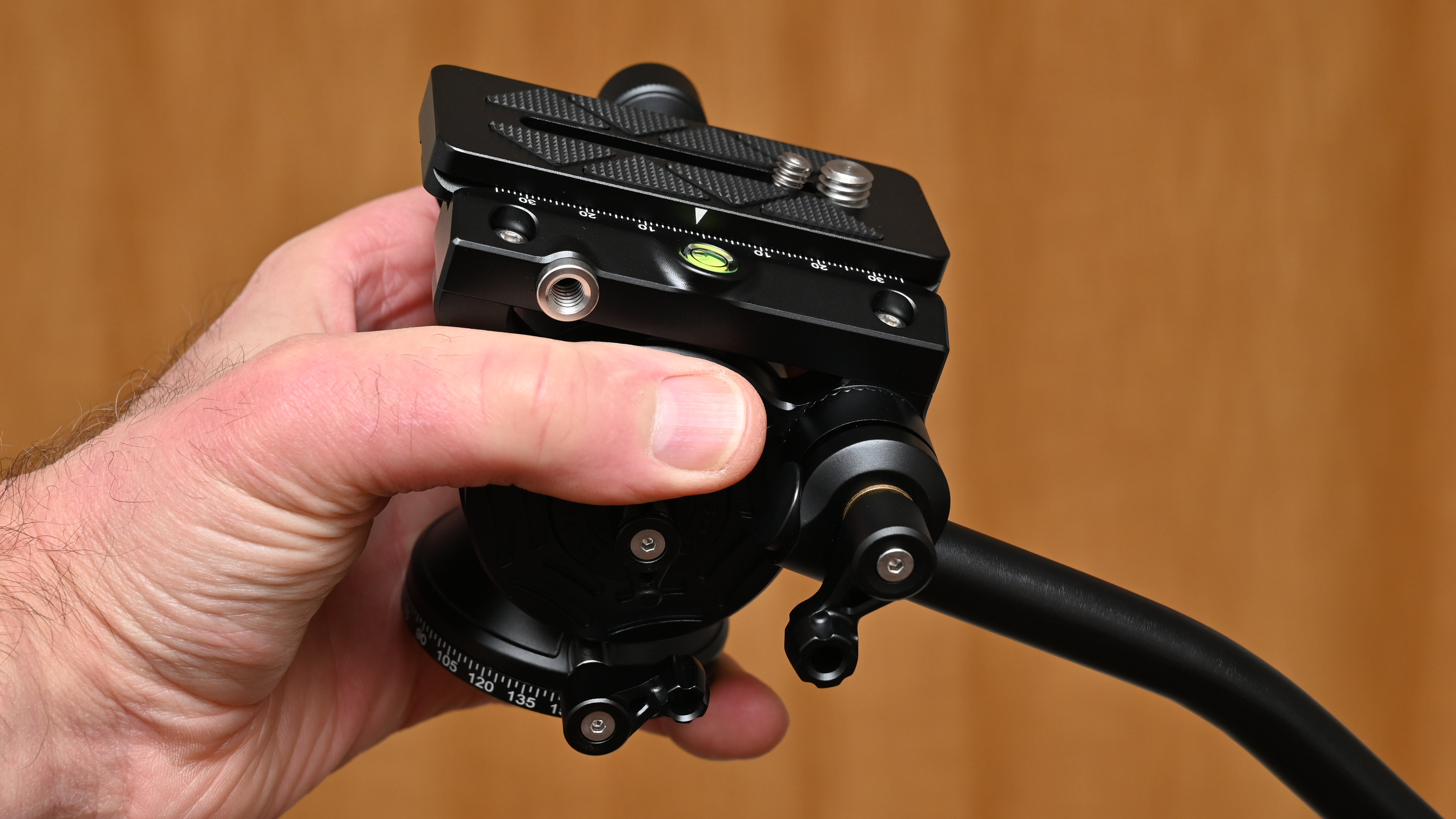
Specifications
Tilt range: 165 degrees (90 down, 75 up)
Panning range: 360 degrees
Maximum load rating: 10kg / 22lb
Base diameter: 60mm / 2.36"
Quick release plate length: 90mm / 3.54"
Height: 95mm / 3.74"
Width: 100mm / 3.93"
Length: 85mm / 3.34"
Weight: 742g / 1.62lb
Key features
The features and overall design of the AirHed Cine make it a perfect match for the 3 Legged Thing Mike and Jay carbon fiber tripods, both of which have levelling bases to keep everything, well, on the level. But compatibility doesn’t end there. We tested the head with the heavy-duty 3 Legged Thing Winston 2.0 tripod from the Pro 2.0 range, using the new 3 Legged Thing LevelHed levelling base. It’s not an entirely perfect match, as the AirHed Cine has a base diameter of 60mm and the mounting platform of the LevelHed base has a smaller 40mm diameter. Even so, the two definitely couple up and play very well together.
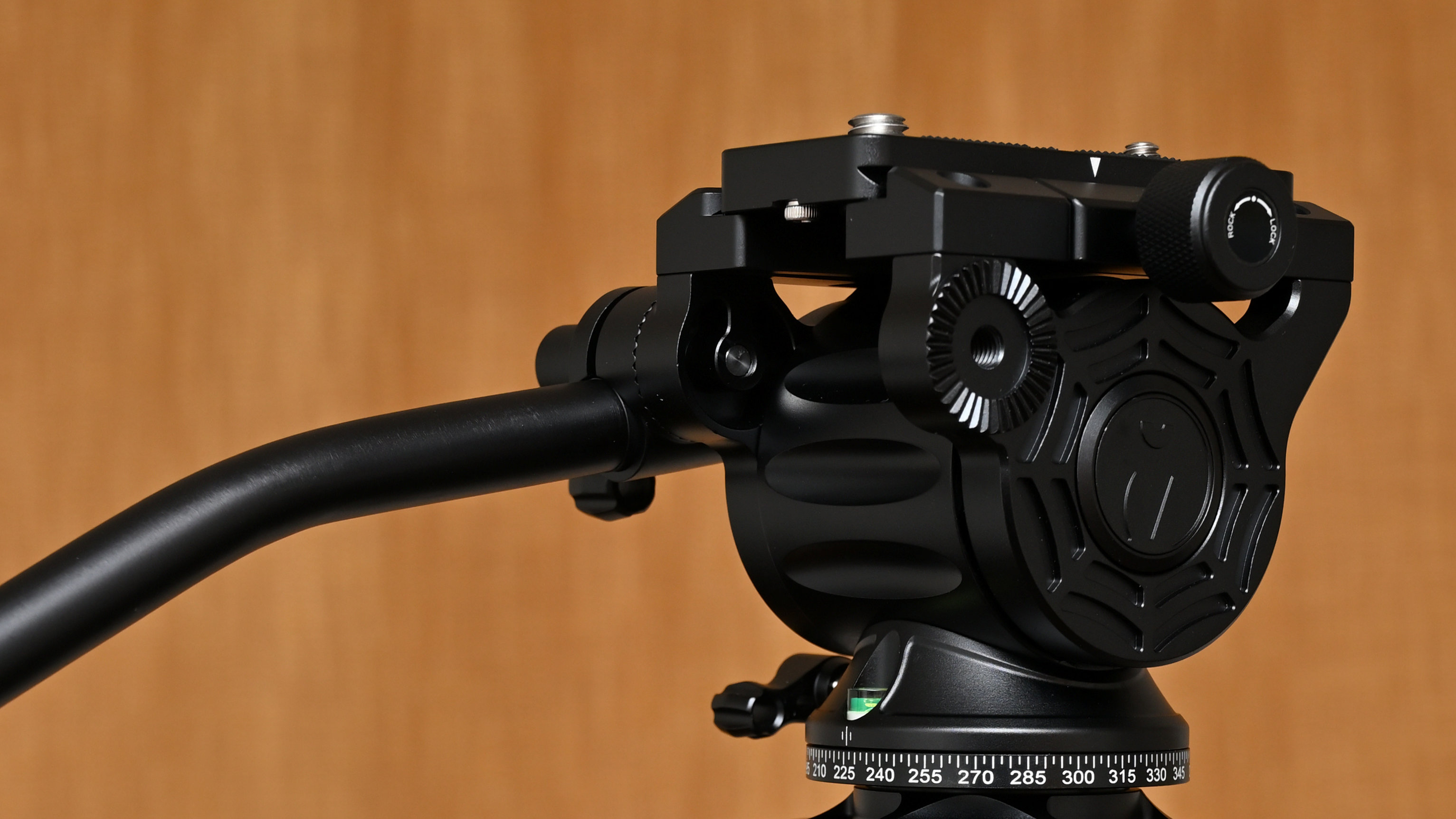
Starting at the bottom, the AirHed Cine’s 60mm circular base has a standard 3/8” threaded attachment socket. Naturally, you can also use it with a tripod that has a ¼” stud, via a regular thread adapter. The base has a 360-degree rotary panning scale printed in increments of 2.5 degrees, lines being labelled at 15-degree intervals. A bubble level is featured at the rear of the plate, to aid levelling during setup for a shoot.
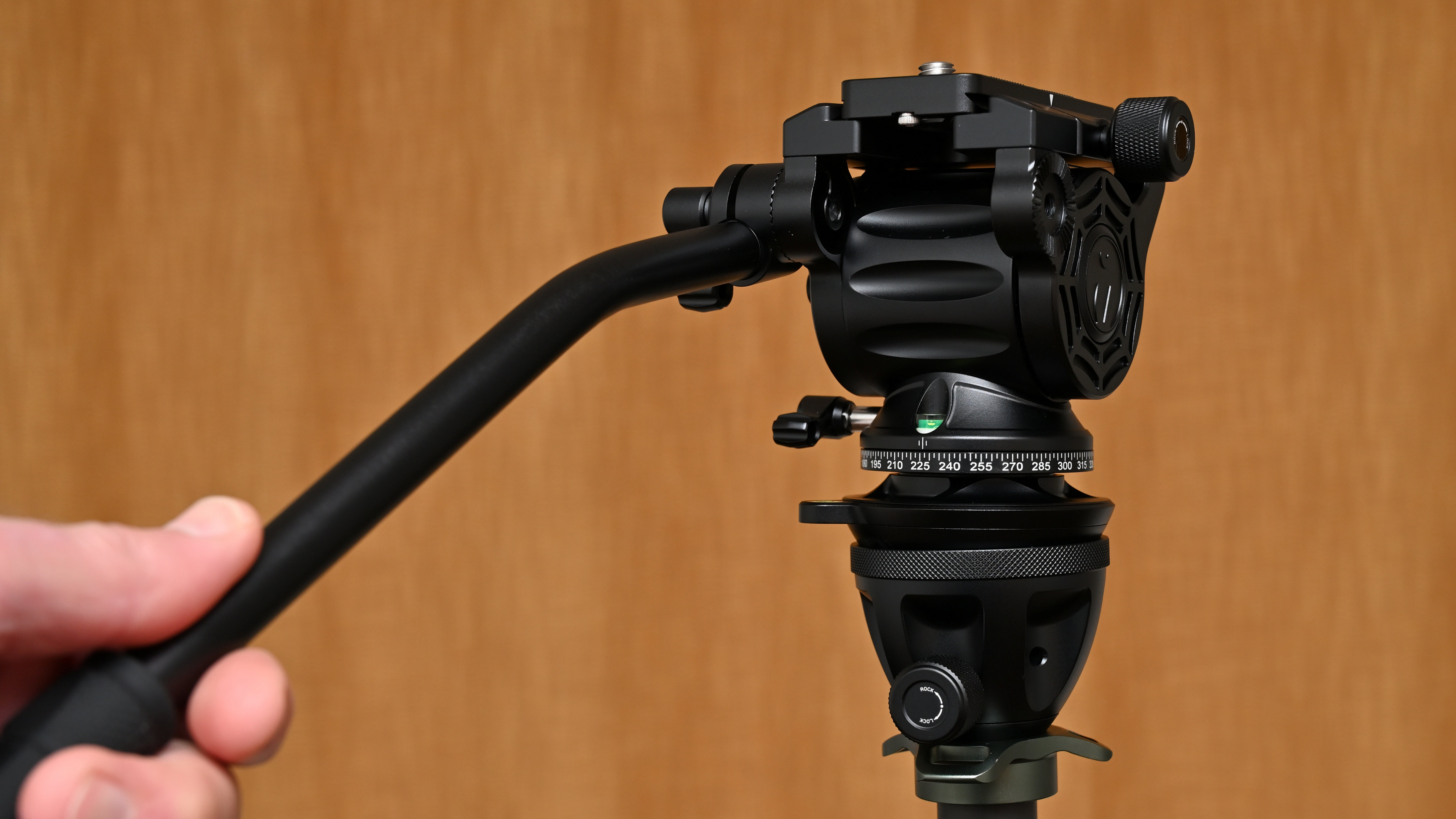
The typically elbow-shaped pan arm can be mounted on either side of the head and fastened with a ratchet-action pan lock. A similar ratchet lever is featured for pan lock/release. Both have a spring-loaded design so that you can pull the lever out, rotate it and pop it back in at the optimum operating position. Just above the pan lock sits the rotary tilt lock/release control. Further up towards the front there’s an additional ¼” threaded socket that you can use for attaching accessories like an LED lamp, microphone or monitor screen.
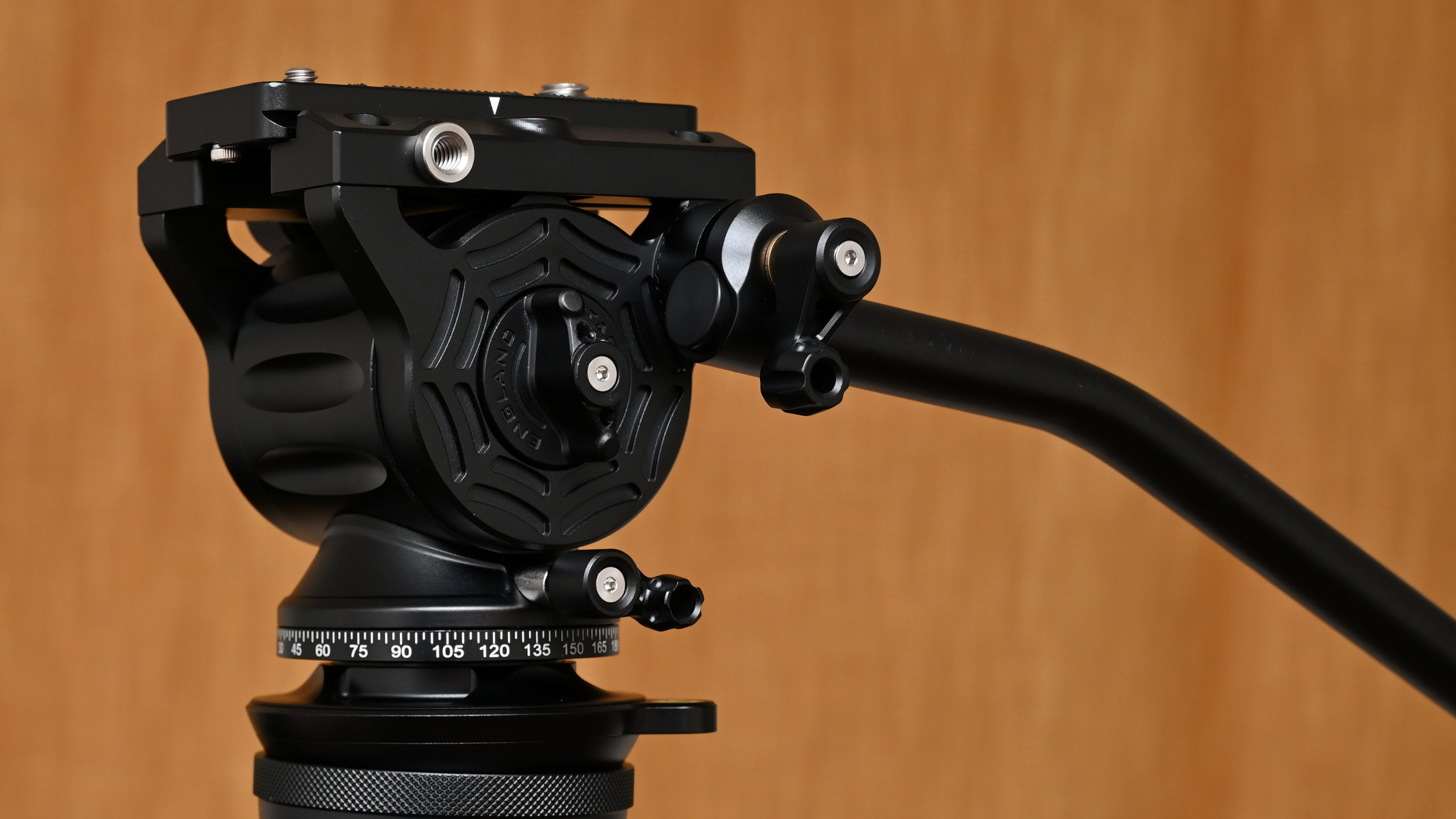
Up on top, there’s a secondary bubble level. This enables you to easily level the tilt function of the head, whereas the lower bubble level ensures that the tripod (or levelling base) is levelled. We tested the AirHed Cine-A version of the head, which has a standard Arca-Swiss style quick-release plate, although it’s typically long for cine use, with a width of 38mm and a length of 90mm, and features both ¼” and 3/8” fastening screws. The head is also available as an AirHed Cine-V version, which has 501-style quick-release plate measuring 50mm wide and 119mm long, and features an additional retractable locator pin. Additional quick-release plates in both styles are available as optional extras. That’s handy if you tend to use more than one camera or like to keep a spare.
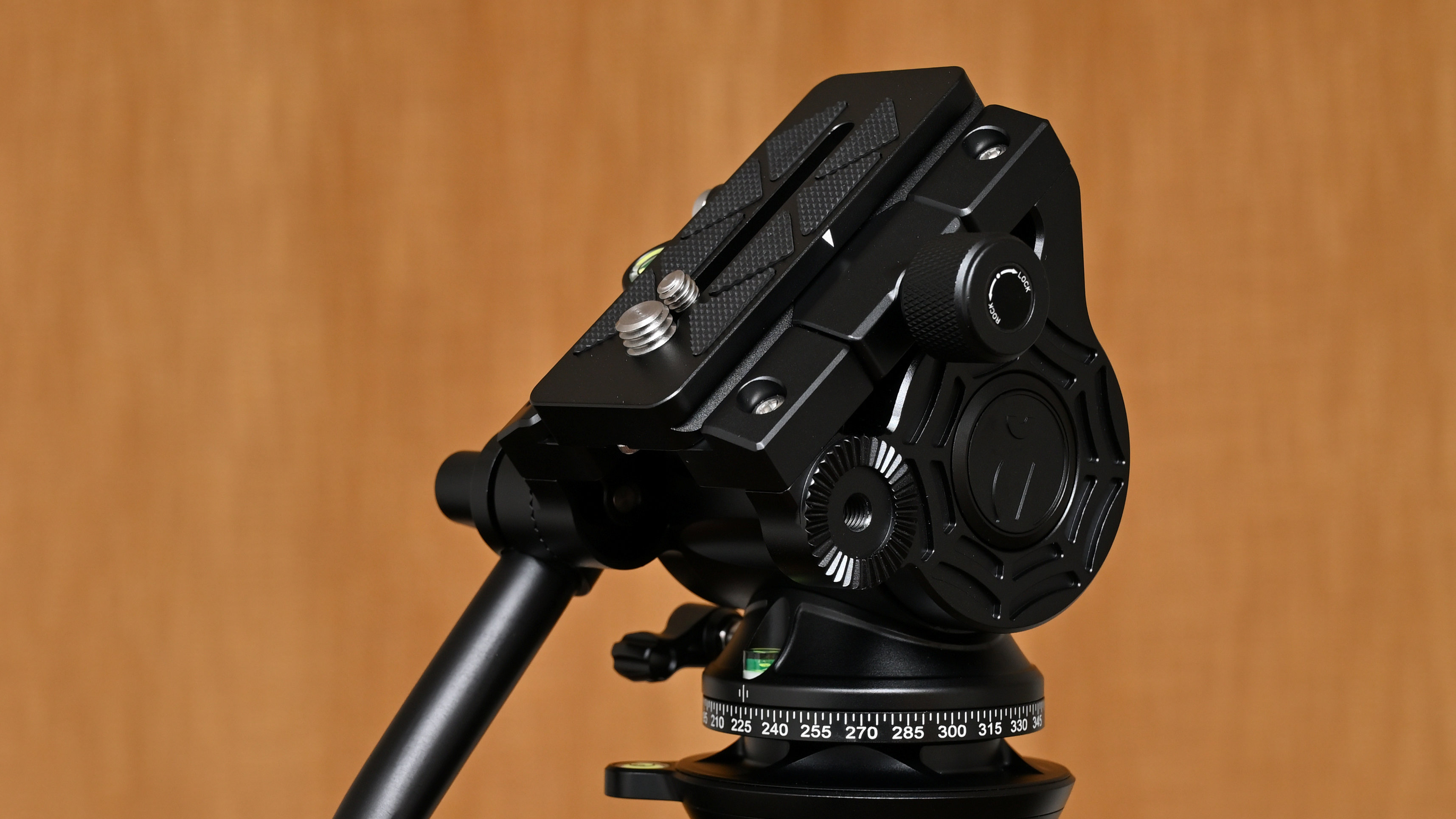
Build and handling
Typical of 3 Legged Thing’s premium products, the AirHed Cine is made from aerospace-grade magnesium alloy, combining strength and rigidity with lightness in weight. It’s available in two color options, namely Slate Blue (with copper accents) and ‘Darkness’, as featured in our review images, which is all matte black. Both versions have a high-quality anodized finish.
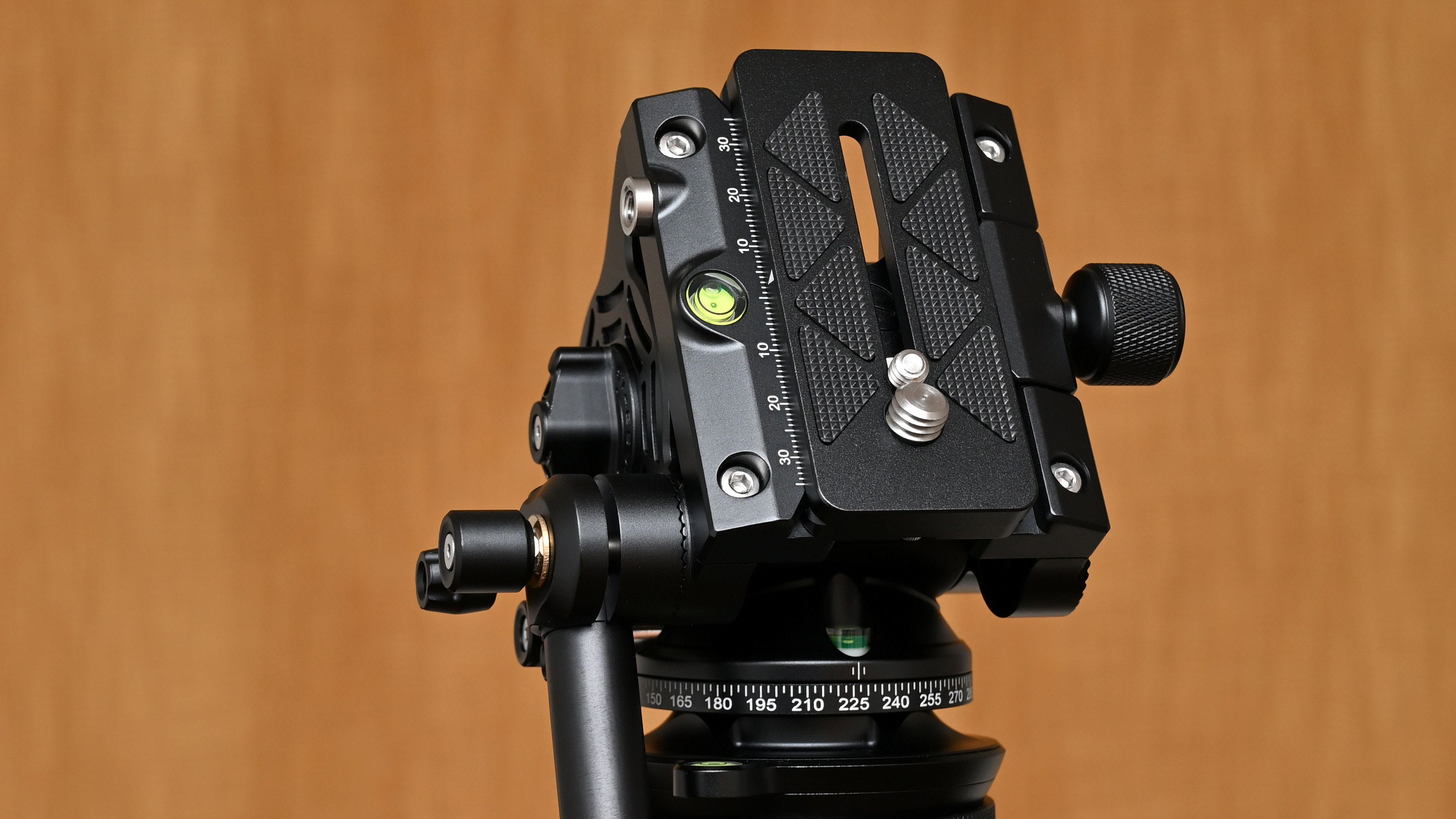
The kit is very nicely turned out, coming complete with a padded soft case and multi-tool. Handling is very assured and this is a key factor for any cine head, as we’ll come to next in our ‘Performance’ section.
Performance
There’s no adjustable counterbalance mechanism, as feature in some top-end cine heads, but the spring-loaded counterbalance of the AirHed Cine makes tilting movements feel natural and assured. The actual range of tilt is very impressive too, stretching from 90 degrees downwards to 75 degrees upwards. As with the tilt function, panning has a very smooth and fluid feel, boosting performance in practical terms. As you’d expect, a full 360 degrees of panning is available, so there are no start and stop end-points.
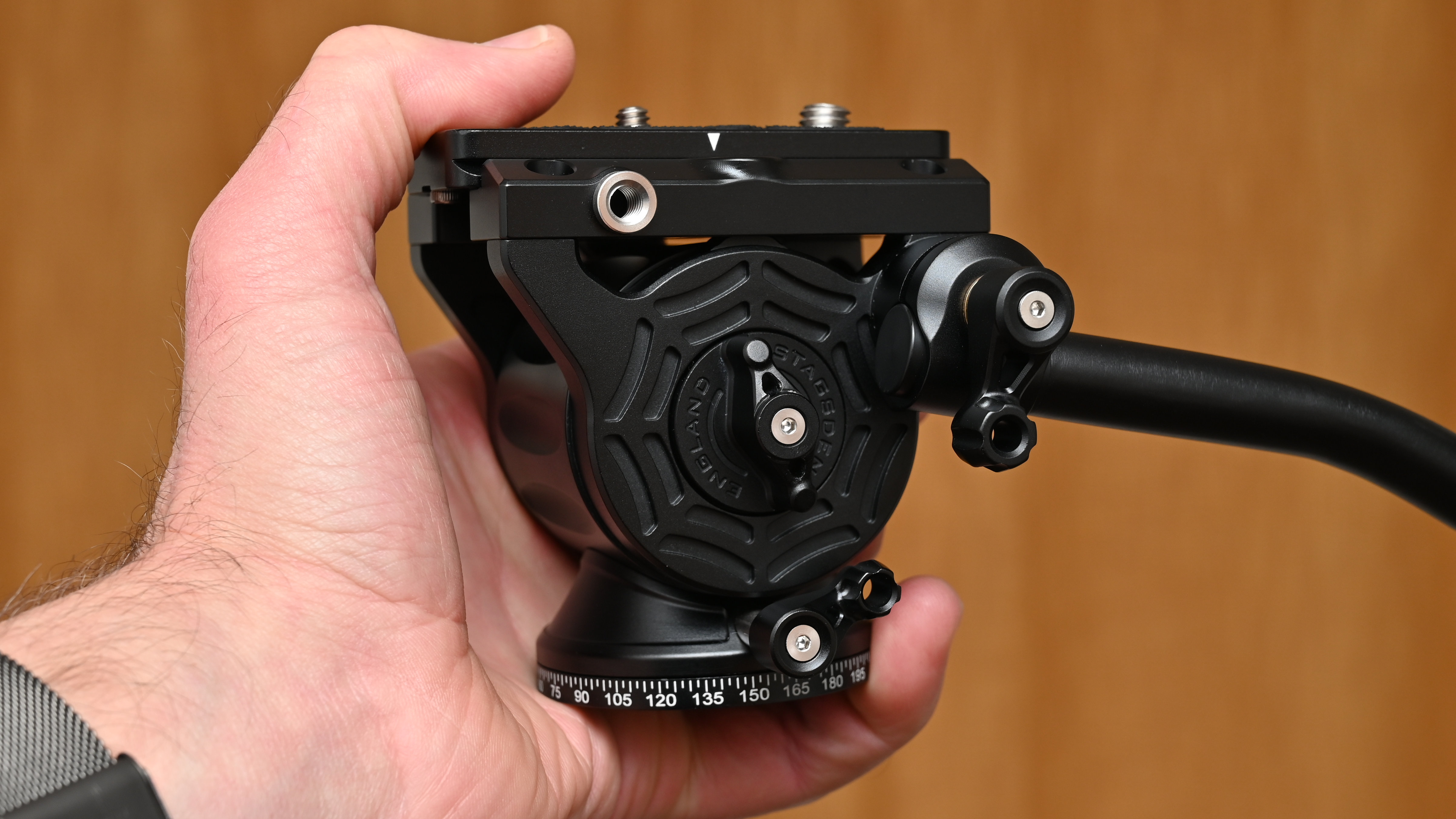
Shooting video is often about fluid movement and tracking, but the AirHed Cine is also reassuringly solid and stable when locked off. Any unwanted flexing or movement is entirely negligible. All in all, it’s remarkably rigid for such a compact, lightweight, and travel-friendly cine head.
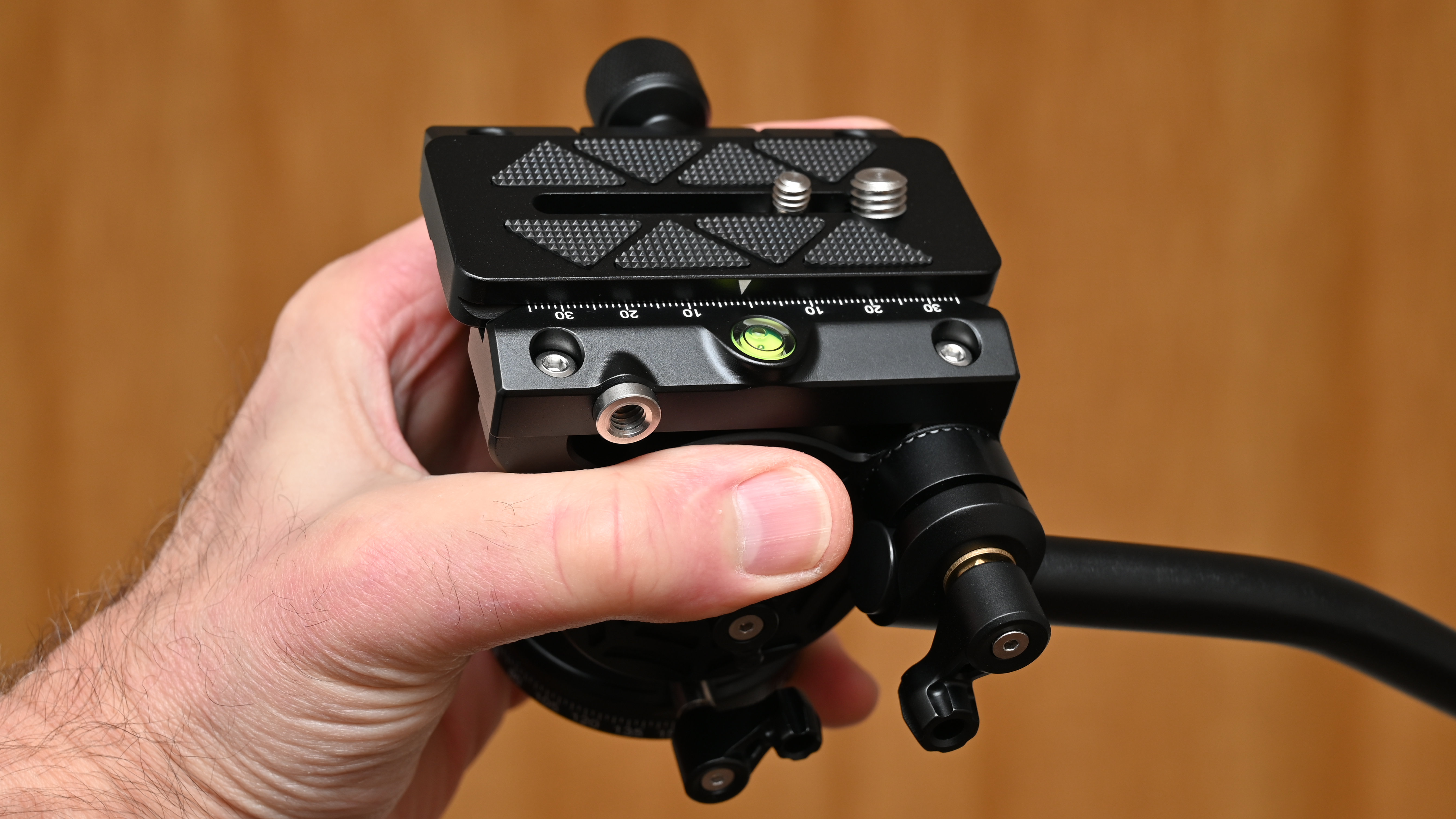
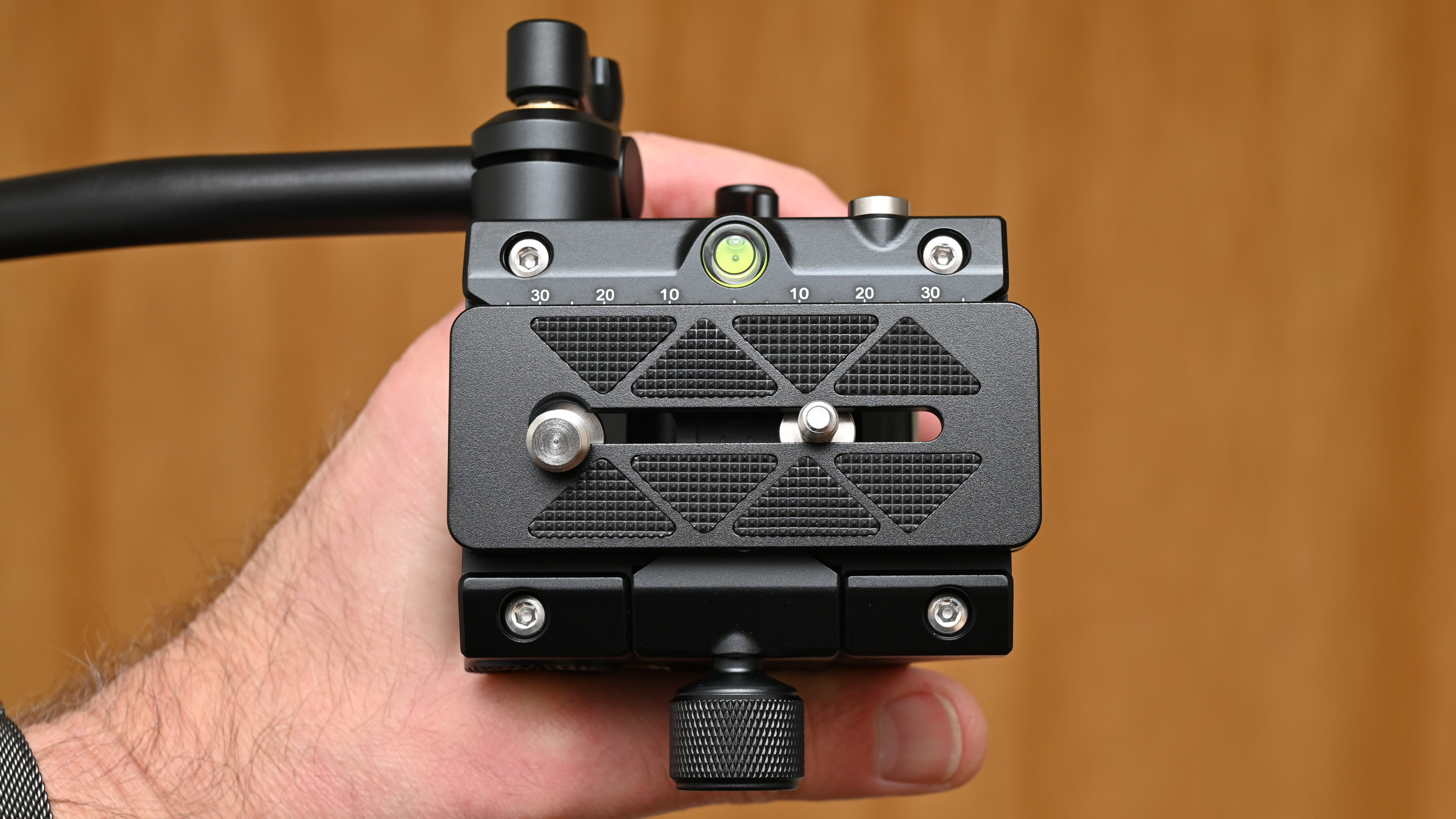
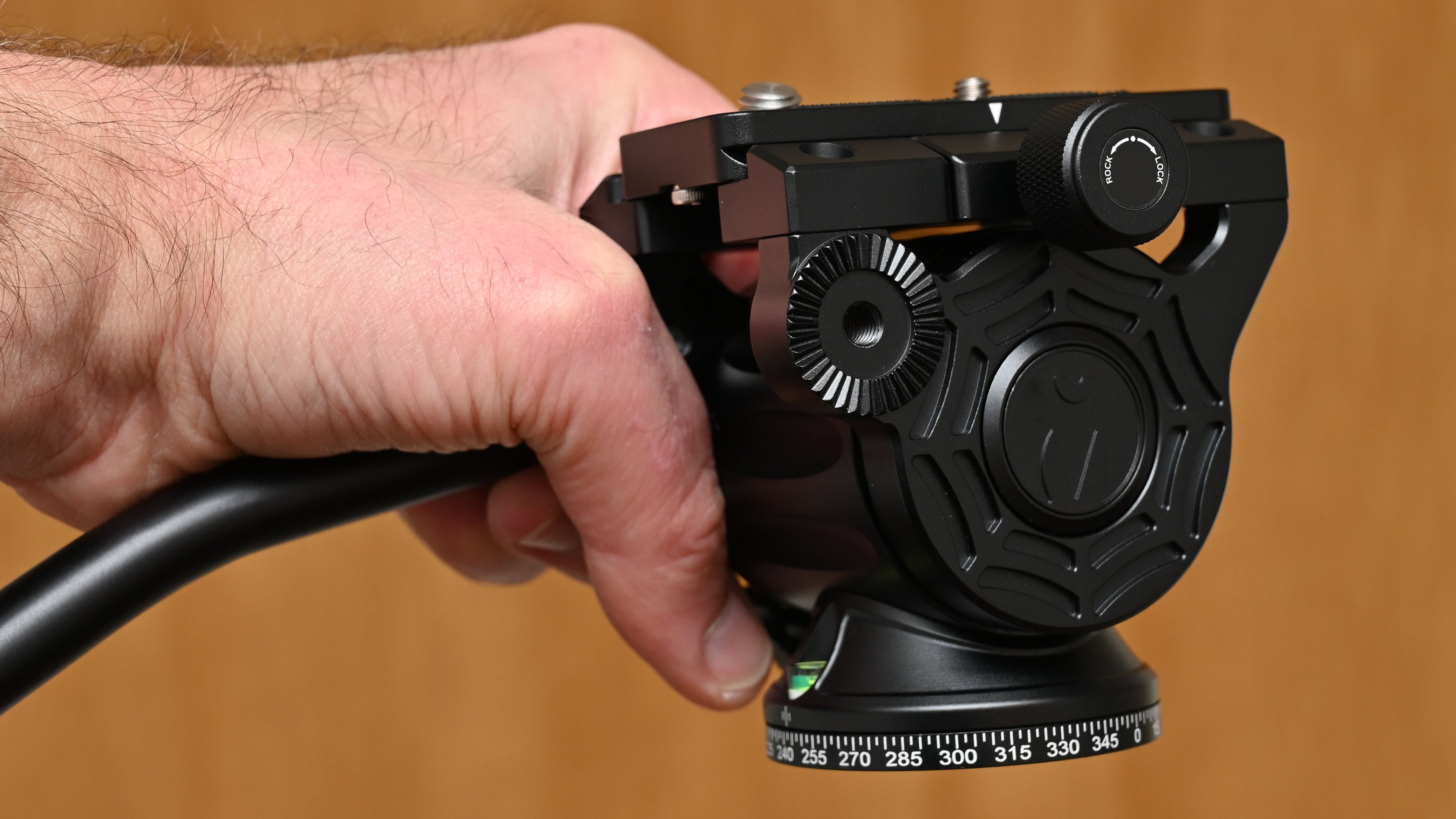
Verdict
A refreshingly compact and lightweight cine head, this one nevertheless delivers a fluid, silky-smooth range of movement for tilt and panning. And despite its relatively small size, it shoehorns in a smart set of features that are well implemented. It’s quick and easy to set up and a pleasure to use. All in all, the AirHed Cine is very easy to live with and travel-friendly for the journey. Considering its excellent build quality, it’s very good value at the price.







